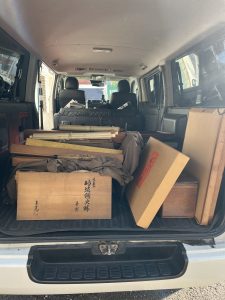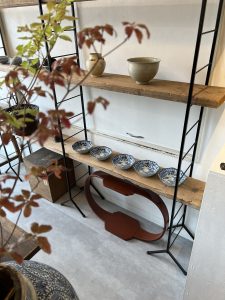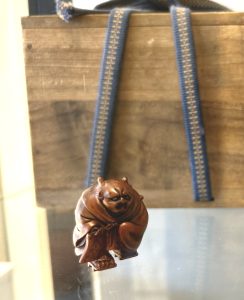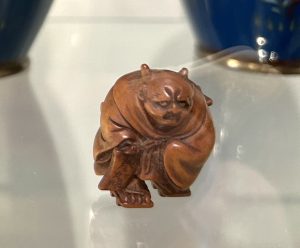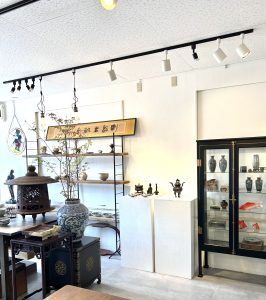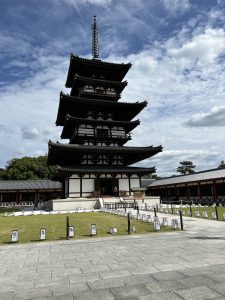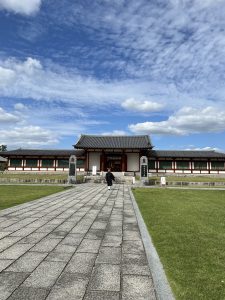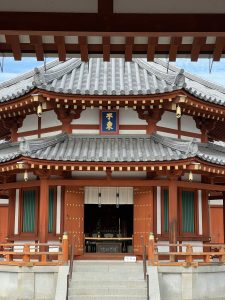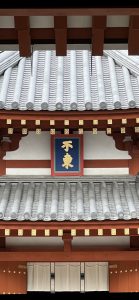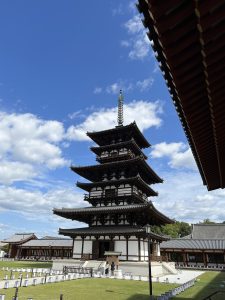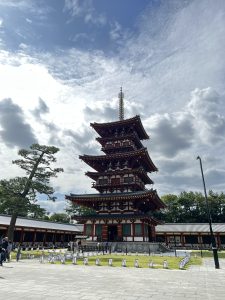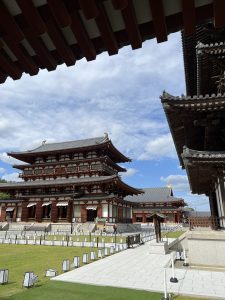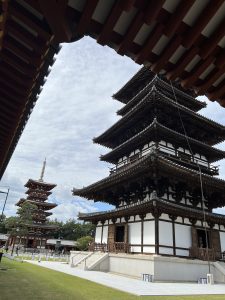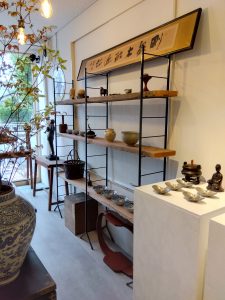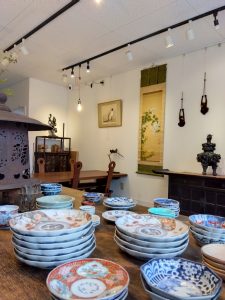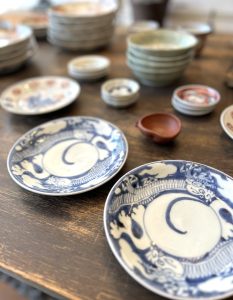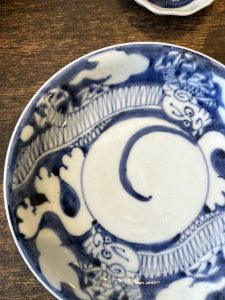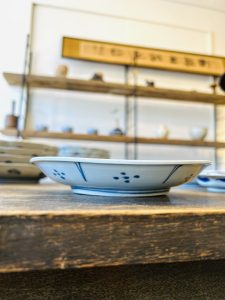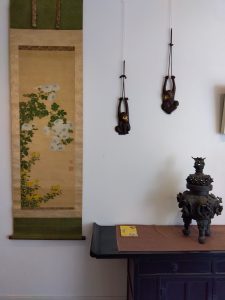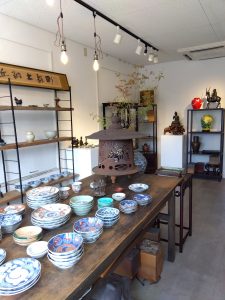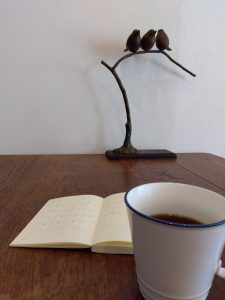チキン南蛮とタルタル(愛知県名古屋市千種区姫池通 骨董買取 古美術風光舎)
2023.10.13
皆さまこんにちは。スタッフTでございます。
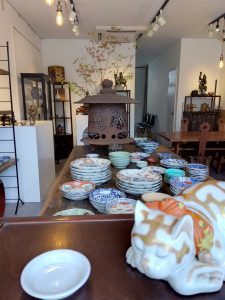
寒暖差が激しくなり、いよいよ秋本番ですね。ただ、残暑の影響が紅葉にも出ているようで、色づく前に枯れてしまったものもチラホラあるとか。とはいえ、足を運んでみれば色鮮やかな紅葉に出会えるのは間違いなし。見頃は例年より少し遅くなるようですが、美しい風景を目に焼き付けに行きたいものですね。
さて、普段はあまりTVを見ない私ですが、ここ最近はW杯やアジア大会などの様々な競技を観戦するため、めずらしくTVにかじりついておりました。
そんな中、スポーツに全く関係ない内容に目が留まりました。
『宮崎県以外のチキン南蛮は本物じゃない』『タルタルソースがなくてもチキン南蛮』
確かに、ご当地以外は本物とは言えないかもしれないとは思いましたが、タルタルソースがかかってなくても「チキン南蛮」と呼ぶとはどういうことなのか。どうやら私は「チキン南蛮」について間違った認識をしていたようです。
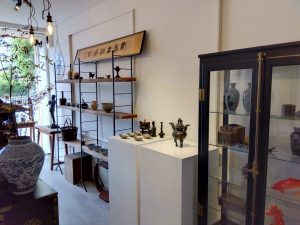
「チキン南蛮」は鶏のから揚げを唐辛子入りの甘酢のタレの南蛮酢に浸けた鶏料理で、ご存じ宮崎県の郷土料理ですが、その発祥は宮崎県延岡市とされています。現在では県全域だけでなく全国にも広まっているお馴染みの料理で、食堂やレストランだけでなく、惣菜、弁当としても人気があり、コンビニのお弁当にも「チキン南蛮」があったりして広く定着していますね。その中に、から揚げにタルタルソースがかかったものを「チキン南蛮」と称して提供しているところもあるようで、それが「本物じゃない」ということになるのだそうで。
チキン南蛮の「南蛮」とは、もともとは16世紀頃に日本にやってきたポルトガル人や、そのカルチャーを指していた言葉。歴史好きの方であれば「南蛮渡来」という言葉などを耳にしたことがあるのではないでしょうか。
彼らから伝わってきた食文化・調理法は当時日本にはない新しいものだったことから、南蛮という言葉が使われるようになったようです。
「チキン南蛮」とは、南蛮酢に浸した鶏料理。南蛮酢とはネギ、玉ねぎ、唐辛子が入った甘酢の事で、その南蛮酢を使っているのでチキン南蛮と呼ばれるようになりました。一般的にはタルタルソースをつけて食べるものをチキン南蛮と呼ぶもの、と私は思っていましたが、本来は南蛮酢に浸したチキン料理を「チキン南蛮」と呼ぶのだそうです。
「チキン南蛮」は宮崎県延岡市で料理店「ロンドン」で働いていた二人の料理人により生まれたといわれています。
二人が働いていたそのお店の賄い料理として出されていたのが鶏のむね肉に衣をつけて揚げて甘酢に浸けた鶏料理だったとのこと。
単なる賄い料理として店に出る事はない料理でしたが、その賄い料理を工夫して、二人がそれぞれの店でメニューとして提供するようになったのが「チキン南蛮」のはじまりといわれているようです。
二つの店の「チキン南蛮」にはさまざまな違いがありますが、最大の違いはタルタルソースの有無。
現在、「チキン南蛮」といえばタルタルソースをつけて食べるという認識が一般的になっていますが、タルタルソースを開発したのはお二人の内の一人だそうです。
ですから、お二人のお店の「チキン南蛮」の一方にはタルタルソースはついているもの、もう一方はついていないものが提供されているのだそうです。
どちらが本当の「チキン南蛮」なのか、と考えがちですが、どちらも賄い料理からヒントを得て、それぞれオリジナルの「チキン南蛮」を開発したのですから、どちらも本物と言えますね。
というわけで、タルタルソースの有無は「チキン南蛮」の絶対的条件というわけではなく、南蛮酢に浸したチキン料理が「チキン南蛮」ということなのです。
いやはや私、全く違った知識として定着しておりました。名物には、相応の由来があるものなんですね。実に興味深いです。
ではでは、また
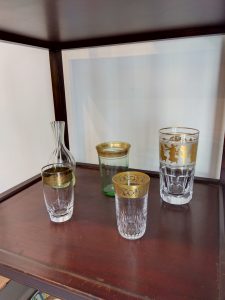
Hello everyone. This is Staff T.
The difference in temperature between the two seasons has been drastically changing, and autumn is finally in full swing. However, it seems that the lingering summer heat is affecting the autumn leaves, and some of them have died before they turn into color. However, if you visit, you will surely be able to see the colorful autumn leaves. The best time to see the leaves is a little later than usual, but it would be nice to go and see the beautiful scenery.
I usually don’t watch TV very often, but recently I have been watching the World Cup, Asian Games, and various other competitions, which is rare for me.
In the midst of all this, something completely unrelated to sports caught my attention.
It was a story about how “Chicken Nanban outside of Miyazaki Prefecture is not real” and “Chicken Nanban without Tartar Sauce.
Surely, I thought, it might not be authentic except for the local area, but what does it mean to call it “Chicken Nanban” even if it does not have tartar sauce on it? Apparently, I had a wrong perception of “Chicken Nanban.
Chicken Nanban” is a chicken dish consisting of deep-fried chicken dipped in a sweet-and-sour vinegar sauce with chili peppers, and is a well-known local delicacy of Miyazaki Prefecture. It is now a familiar dish that has spread not only throughout the prefecture but also throughout Japan. It is popular not only in restaurants and cafeterias but also as a side dish and bento boxed meal, and is widely established as “Chicken Nanban” in convenience store bento boxes. Among them, there are some places that offer fried chicken with tartar sauce as “Chicken Nanban,” which is not the real thing, according to some people.
The “Nanban” in “Chicken Nanban” originally referred to the Portuguese who came to Japan around the 16th century and their culture. If you are a history buff, you may have heard of the term “Nanban-togurai” or something similar.
The term “Nanban” was used because the food culture and cooking methods introduced by the Portuguese were new to Japan at the time.
Chicken Nanban” is a chicken dish dipped in Nanban vinegar. Nanban-zu is a sweet vinegar with green onions, onions, and chili peppers, and it is called “Chicken Nanban” because it is made with this vinegar. I used to think that chicken nanban was generally served with tartar sauce, but it was originally called “chicken nanban” when the chicken was dipped in nanban vinegar.
Chicken Nanban” is said to have been created by two chefs who worked at the restaurant “London” in Nobeoka City, Miyazaki Prefecture.
The dish that was served as a bribe at the restaurant where the two chefs worked was battered chicken breast, deep-fried, and dipped in sweet vinegar.
It was a dish that was never served in the restaurant as a bribe dish, but the two devised it and began serving it as a menu item at their respective restaurants, which is said to be the beginning of “Chicken Nanban.
There are many differences between the two restaurants’ “Chicken Nanban,” but the biggest difference is the presence or absence of tartar sauce.
Today, it is generally accepted that “Chicken Nanban” is eaten with tartar sauce, but it is said that one of the two men developed the tartar sauce.
Therefore, one of their restaurants serves “Chicken Nanban” with tartar sauce, while the other does not.
It is easy to wonder which one is the real “Chicken Nanban,” but since both of them developed their own original “Chicken Nanban” inspired by bribery dishes, both of them can be said to be the real thing.
Therefore, the presence or absence of tartar sauce is not an absolute requirement for “Chicken Nanban,” but a chicken dish dipped in Nanban vinegar is called “Chicken Nanban.
I was completely wrong. I guess specialties have their own origin. It is very interesting.
See you soon!
*******************
ご実家の整理やお片付けなどをされている方のご相談などが多くございます。
お片付けなどくれぐれもご無理のないようになさってくださいませ。
風光舎では古美術品や骨董品の他にも絵画や宝石、趣味のお品など様々なジャンルのものを買受しております。
お片付けをされていて、こういうものでもいいのかしらと迷われているものでも、どうぞお気軽にご相談下さいませ。
また風光舎は、出張買取も強化しております。ご近所はもちろん、愛知県内、岐阜県、三重県その他の県へも出張いたします。
まずは、お電話お待ちしております。
愛知県名古屋市千種区姫池通
骨董 買取【古美術 風光舎 名古屋店】
TEL052(734)8444
10:00-17:00 OPEN
#出張買取#骨董#古美術#骨董品#絵画#版画#茶道具#刀剣#彫刻

